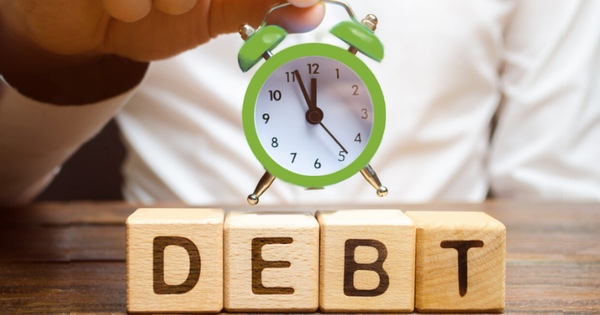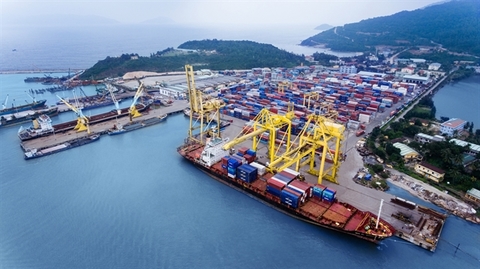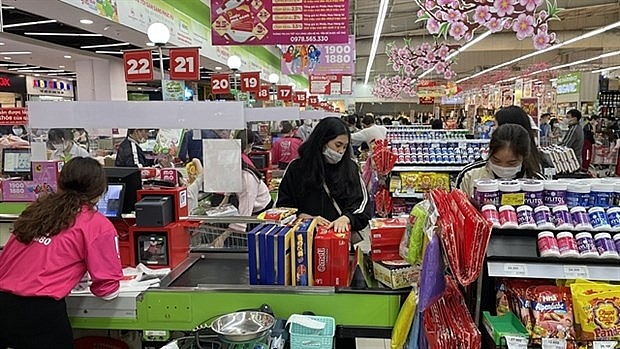Bad debts affecting key industries
Bad debts affecting key industries
The worrisome situation of rising bad debts during the ongoing Covid-19 pandemic has affected several key industries.
Illustrative photo. |
This was revealed in the financial statements of commercial banks for the fourth quarter of 2021. Many banks have now begun to work towards reducing Group 5 debts so as to lower the bad debt ratio.
Group 5 debts
According to statistics from 27 commercial banks that have listed their financial statements for 2021, only nine banks have reduced their bad debt ratio since the end of 2020. In this, BIDV decreased from 1.76% to 0.98%; SHB decreased from 1.83% to 0.8%; Sacombank decreased from 1.7% to 1.47%; Eximbank decreased from 2.52% to 1.96%; OCB decreased from 1.69% to 1.32%; TPBank decreased from 1.18% to 0.82%; VietABank decreased from 2.3% to 1.86%; Kienlongbank decreased from 5.42% to 1.89%; and PGBank decreased from 2.44% to 2.24%. Other remaining banks have all increased their bad debts. VPBank has a bad debt ratio of upto 4.47%, and the ratio of bad debt to outstanding loans at VietBank increased sharply from 1.75% to 3.65%, while NCB showed increase from 1.51% to 3%.
The financial statements of the fourth quarter of 2021 show that Group 5 debt of many banks has fallen. BIDV with Group 5 debt showed a fall from VND 9,546 bn to VND 6,979 bn. In previous years, BIDV was often in the group with a sharp increase in Group 5 debt. VIB has also handled more than VND 861 bn of Group 5 debt, down 54% to only VND 733 bn now. MSB and VietCapital Bank also recorded a decrease in Group 5 debt at the end of 2021 compared to the end of 2020. In general, the total debt of Group 5 of 27 banks in 2021 has decreased by more than VND 13,750 bn compared to the beginning of the year. In terms of proportion, Group 5 debt decreased from 0.87% at the beginning of the year to 0.58% at the end of 2021.
The significant drop of the Group 5 debt did not come from the handling of collateral assets, because banks are still struggling to sell assets to recover debts. This result came from the fact that banks started to step up the handling of bad debts by setting up provisions. Data shows that in the fourth quarter of 2021, BIDV used more than VND 7,200 bn from the reserve fund to deal with bad debts, while VIB used more than VND 915 bn of specific risk provision to deal with bad debts last year.
Banks worried
The pressure to keep bad debts below 3% is getting heavier and heavier. In the case of BIDV, Group 4 debt increased by more than 40% in 2021 to VND 3,450 bn, and Group 3 debt also increased by 18% to VND 2,814 bn. At this time, it is necessary to pull the bad debt ratio down, because the debts of Groups 3 and 4 are starting to rise. It is seen that banks are inclined to quickly handle Group 5 debts. Banks only have collateral assets for these debts and it is also reasonable to release the reserve fund that has been accumulated for a long time to handle debts which are difficult to collect. The remaining fixed assets can be used by banks to recover capital later.
By the end of last year, the bad debts on the balance sheet of commercial banks was still low. According to data from the State Bank of Vietnam, the on-balance sheet bad debt ratio was 1.9% in 2021, higher than 1.69% at the end of 2020 but still below 3%. However, this number will increase when calculating other amounts. For instance, by including bad debts sold to Vietnam Asset Management Company (VAMC), the bad debt ratio is up 3.79%, and if fully including the debts that are extended or postponed according to Circulars 01, 03, 14, they can also become bad debts. The gross bad debt ratio can be upto 8.2%, compared to the end of 2020, at only 5.1%. The policy of extending and delaying debts according to current regulations will end at the end of June. At that time, the implicitly classified bad debts will be revealed.
According to Mr. Tran Minh Dat, Deputy General Director of MB, with outstanding balance restructured by the end of 2020, the bank will recover upto 95%, i.e. only 5% fall in bad debt. When the pandemic hit hard in 2021, MB tried to only get about 10% of the debt balance restructured during the pandemic period as bad debt, so higher bad debt is inevitable. In this context, Group 5 debt has been set aside by banks, using the fund to write off these debts, and for reducing the bad debt ratio. In the near future, when bad debt rises, they will also be partially suppressed.
Group 5 debt on the balance sheet at this time only increases bad debt, while the ability to recover from the sale of collateral assets is quite uncertain. The current collateral asset auction still occurs, but mainly on the news of banks. According to one Deputy General Director of a Commercial Bank, the outbreak of the pandemic in the last two years has negatively affected the debt collection activities of banks. One of the main factors is that the economy has suffered heavy damage, leading to a decline in financial capacity, reducing the need to buy assets, and buying debts of partners, and at the same time, many investors are afraid to buy properties for fear of risks due to the impact of the uncertain pandemic situation.
Recently, the State Bank of Vietnam, the Vietnam Banks Association, and credit institutions submitted many documents to the National Assembly, Government, and ministries. However, according to Mr. Nguyen Quoc Hung, General Secretary of the Vietnam Bankers Association, dealing with bad debts under Resolution 42/2017 is still at a key stage such as seizing of collaterals, applying simplified procedures in dispute settlements, determining the order of priority for payment from proceeds of the sale of collaterals, problems in applying the law on bad debt handling, and handling of collateral for bad debts. Currently, banks are still making recommendations to competent state agencies to study and legalize Resolution 42, promulgate the Law on Bad Debt Handling to resolve legal conflicts, and supplement other necessary mechanisms and policies.























